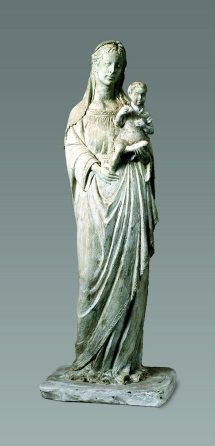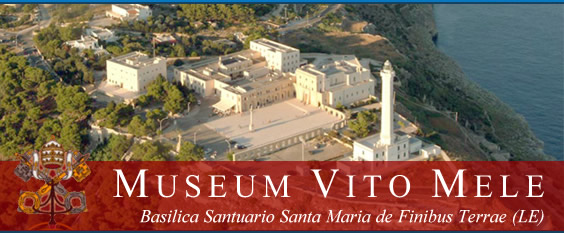|
Nasce a Lugo (Ravenna) nel 1917. Frequenta l’Accademia
di Belle Arti prima a Bologna, e poi a Milano,
dove ha come maestro Francesco Messina. La scultura
di Manfrini in questo periodo è caratterizzata
da un forte modellato figurativo, uno stile che
punta
incisivamente sulla resa psicologica. Molto significativi,
in questo senso, risultano i ritratti eseguiti
dal maestro (Raffaella e Testa di giovinetta),
come le altre sculture in cui predomina la dolcezza
delle forme (Adamo e Eva), dove alla morbidezza
plastica memore dell’arte di Messina, si
unisce un tocco di raccoglimento che si rifà
ad esperienze artistiche quattrocentesche, soprattutto
donatelliane.
Lo scultore realizza prevalentemente opere sacre,
un genere che gli permette - attraverso lo studio
della tradizione artistica rinascimentale - di
recuperare sentimenti antichi e intimi, trattandoli
con delicatezza e garbo. Le sue sculture, come
ad esempio le Madonne, trasmettono all’osservatore
quiete e quella “fiducia in Dio”, elemento
essenziale delle opere devozionali. Lo stile di
Manfrini si caratterizza, oltre che dal forte
contrasto chiaroscurale, anche dalla vibrante
pittoricità che pervade le superfici delle
sue sculture. Numerose sono le mostre tenute dall’artista,
come anche le partecipazioni a collettive, prestigiose
rassegne ed eventi artistici. Tra le maggiori
opere di questo grande maestro ricordiamo: la
Porta centrale del Duomo di Siena; il Monumento
a Papa Giovanni
XXIII a Imbersago (Como); le sculture per la Cappella
privata di Paolo VI, in Vaticano; le splendide
sculture conservate nella Galleria d’Arte
Moderna dei Musei Vaticani: Saulo, bronzo del
1958, S. Tarcisio (1960), e l’Annunciata
(1962). Tra gli ultimi lavori di Manfrini citiamo
la Porta Santa per la Basilica di San Paolo Fuori
le Mura a Roma, realizzata in occasione del Giubileo
del 2000.
|

MADONNA
CON BAMBINO, anni ‘70
gesso, h. cm. 68
|
|
|
|
|
Born in Lugo in the province of Ravenna in
1917, Enrico Manfrini attended first the Accademia
of Belle Arti in Bologna and then that of Milan
where he studied under Francesco Messina. Characteristic
of his sculpture in this period was a strongly
modelled figurative style which had an incisive
psychological impact. The portraits Raffaella
and Testa di giovinetta are very significant in
this respect. In the sculpture Adamo and Eva it
is the gentleness of the form which predominates.
To the softness of the line, that is a reminder
of Messina, is united a touch of contemplation
that recalls 15th century masters, above all Donatello.
Manfrini’s work is primarily religious, a
genre that enables him to get back to the most
ancient and innermost feelings, treating them
with delicacy and grace, through the study of
the artistic traditions of the Renaissance. Sculptures
like his Madonna transmit to the viewer the calmness
and faith in God that is essential to devotional
works. His style is characterised not only by
strong chiaroscuro
contrasts but also by the vibrant pictorial quality
that textures the surfaces of his sculptures.
He has taken part in numerous exhibitions and
prestigious artistic events. Amongst his major
works are the central door of the Duomo at Siena,
the monument to Pope John XXIII at Imbersago,
the sculpture for Pope Paul VI’s private
chapel at the Vatican, the bronzes Saulo (1958),
S. Tarcisio
(1960) and Annunciata (2000) which are in the
Gallery of Modern Art at the Vatican. Recent work
includes the Porta Santa for the Basilica di San
Paolo Fuori le Mura in Rome. This door was made
at the time of the 2000 Jubilee.
.
|





